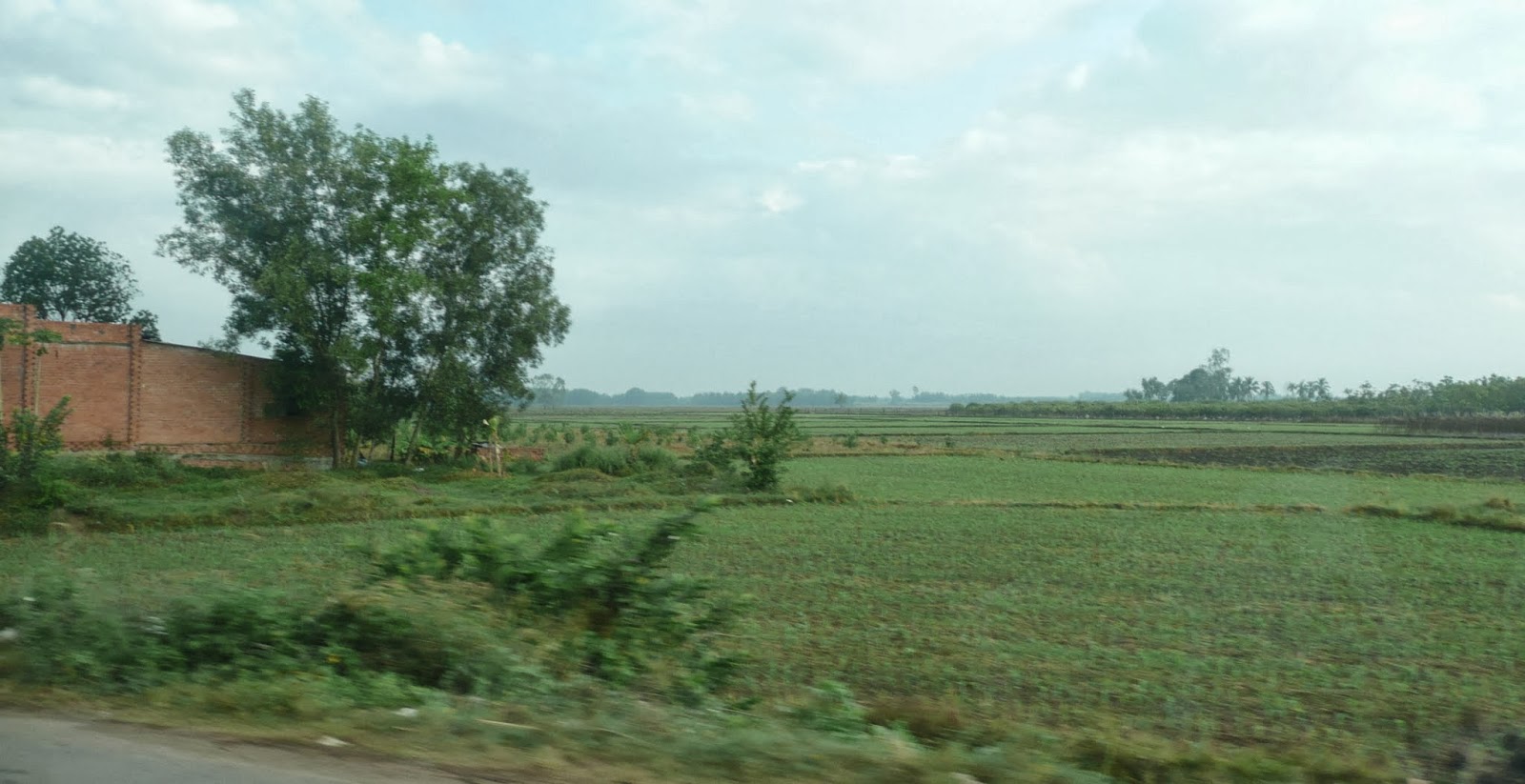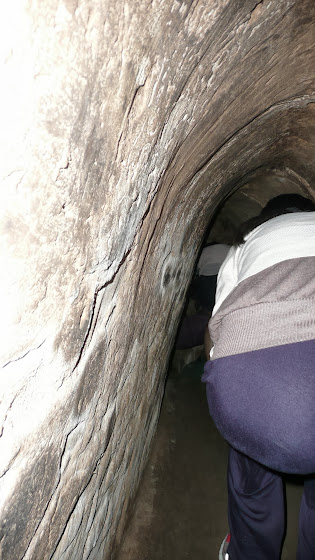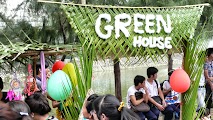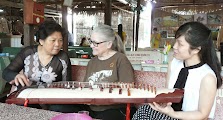 |
House of President Pham Van Dong, President of the
Provisional Revolutionary Government and later of the
Unified Republic |
Tay Ninh Province – Vietnam-Cambodia Frontier (amazing mountain and
the historic site of the Provisional Revolutionary Government of
South Vietnam)
While the armed struggle and diplomatic work of freeing Vietnam from
French colonialism and American imperialism took place, the
Provisional Government of South Vietnam (the real one, not the USA
puppets) functioned in the jungle passing laws, implementing a new
economy and building a free, unified Vietnam in coordination with the
Viet Cong Peoples Army. In spite of US military spraying of
thousands of tons of Agent Orange, dropping millions of pounds of
bombs and committing more than 625,000 troops at one point trying to
defeat the people of Vietnam, in the end the Provisional Government
and People's Army WON! During many of the years of struggle in the
jungles of western Vietnam's Tay Ninh Province at the Campuchia
border, the Provisional Government made its plans and ran its
people's government and war committed to victory and liberation, no
compromise, no defeat. And we got to see a replica national monument
of such a location during a recent day trip!
 |
Country side in the frontier area near Campuchia in Western
Vietnam, Tay Ninh Province |
December 15th Leanna
and I had the opportunity to visit this historic site with Ms Vinh
and a TDT driver. It took a couple of hours of driving to reach Tay
Ninh and the Black Lady Mountain, a beautiful mountain with several
pagodas built along its sides – the mountain is surrounded by
fields of rice, vegetables, rubber trees, fruit groves – a real
vista which also included a LARGE lake. The Black Lady Mountain is
well known to religious and sightseeing Vietnamese. In March the
park and mountain trails are very crowded. The monks in the pagodas
manufacture herb medicines on site. People younger and more fit than
us will spend the three to four hours to hike up the mountain, but we
took the cable car to the terminal at the first and largest pagoda
probably 3/4 mile in elevation change. Then we walked up steep stone
steps for probably another ¼ or more mile visiting three more
pagodas and historic sites. The cable car was fun with an incredible
view of the mountain and surrounding lands – LARGE farming valley
of the area and a beautiful lake in the distance.
 |
| Pagoda on Black Lady Mountain |
When we arrived about 9:30am at the foot of the mountain
there were very few tourists around and even when we got off the
cable car there were no crowds. But an hour later we had lots of
company of all ages (many families visiting the pagodas) as we were
climbing up and down the steps to the pagodas and other sights such
as the caves that the pagodas feed into (the pagodas are built with
their backs to the mountain and to natural caves that provide more
useable space). Painted pagodas are beautiful in many aspects: yes
they are “holy” buildings but not in the same way that we are
used to thinking about: There are many great big statues of a golden
Buddha, but Buddha is not a god but a moral and metaphysical
inspiration for leading a good life with the hope that if you are
successful then you may move up the wheel and when you are born again
you have a better chance of enlightenment with a chance to reach
moksha, at least that is my feeble and humble understanding. These
pagodas as well as other plaques especially commemorate
 |
Memorial to Viet Cong soldiers who died
defending the mountain from the
American invaders. |
the brave
soldiers of the People's Army who fought and died in the province and
in many battles defending Black Woman Mountain. Besides tending to
the visitors at the temples, the monks are around (they live there!)
making traditional herbal medicines from trees, bees and plants in
the area. One picture we shall be sharing shows a barefoot nun
mixing the medicine by pressing it with her feet. The materials were
of a doughy looking texture. When the nun noticed me watching and
shooting a pictures she waved to me so that I have a wonderful photo
of a smiling, happy nun to share on blog. Beside her were two, I
think monks who were helping in the work. At other spots close by
more monks and nuns were working herbs that were piled in the sun to
dry. All around the temples the smoke and smell of joss hung in the
air as people lit up to honor the Buddha, ancestors, soldier heroes,
the temples, nature, whatever and the beautiful surrounding of the
Black Lady Mountain.
It is noteworthy
that the young people sprinted past us on the darned steep stairs, oh
the exuberance of youth and childhood when scampering up mountains is
just a big lot of fun. Another woman was taking the mountain using
both hands and feet to make sure that she eliminated or at least
reduced the chance of falling. We were already on the way down so I
didn't give her method a try then but who knows what will be on the
next mountain? Oh, a great insight, walking down steep mountain
stairs is easier than walking up the same steep stairs, duh. When we
had come off the mountain there were a lot of tourist shops open
selling local foods and other gift items, so we bought some to share
with students and other faculty at the University.
Of course we also
ATE delicious food in Tay Ninh Province starting with an early lunch
in a small cafe run by a village woman – great bowls of pho bo and
bun bo Hue. Tay Ninh is famous for soup shops and they deserve the
credit that they get. Tay Ninh soups are made with fresh meat, fresh
greens and other vegetables and good rice noodles made by either the
proprietor or at a local noodle factory. It seemed that we had
already carried out a full days touring but it was only noon (We had
climbed into the van and hit the highways at 6am.).
Full, we headed back
south and east but still paralleling the frontier with Campuchia.
There were many farm tractors pulling loads of cut bamboo and other
crops on the highway – like in the US in rural areas tractors have
the right of way on the two way hard top roads and dirt roads of the
countryside, they make for exciting motoring what with the big
trucks, buses, and schools of motorbikes. Then there are the buffalo
munching away alongside the highway as well as chickens, dogs and
cats, geese, and egrets (probably a few pigs too but I didn't see
any). We also noticed for the first time traditional fishing rigs
all along the banks of the many canals, creeks, small rivers and
larger rivers. After a few kilometers we took a right hand turn down
a narrow road heading toward the Campuchian border This was
definitely getting off the beaten track, just some farms here and
there. Ms Vinh said that we were on the way to a historic location:
the site of the provisional revolutionary government.
Furious fighting
took place in Tay Ninh province as the US and the puppet army of the
Republic of (South) Vietnam fought to dislodge the Viet Cong and halt
imports of material support for the
 |
Plans made for the capture of Saigon, now HCMC, by the PRG
and the National Front for the taking of Saigon in 1975. The
map tells the story of the movement from North to South and
through Campuchia and Laos of men and materials. |
revolutionary war being brought
down the Ho Chi Minh Trail through Laos and Campuchia to US occupied
South Vietnam. For those who haven't read about the Ho Chi Minh
Trail you might go to Wikipedia and type in Ho Chi Minh Trail and you
will find a nine page document about the trail. Here is a little
quote from the history in Wiki.
“It
was named by the Americans for North Vietnamese president Hồ
Chí Minh.
Although the trail was mostly in Laos, the communists called it
the Trường
Sơn Strategic
Supply Route, after the Vietnamese name for the Annamite
Range mountains
in central Vietnam.[1] According
to the United States National
Security Agency's
official history of the war, the Trail system was "one of the
great achievements of military engineering of the 20th century."[
Just FYI the trail
was not one super highway but many dirt trails that were large enough
for some smaller trucks, bicycles, buffalo carts and thousands of men
and women carrying materials on their backs or with carrying poles.
When you walk in this jungle you realize the amazing effort made by
the Vietnamese to carry out their liberation struggle. The sacrifice
to reach freedom liberation reportedly cost somewhere between 2 and 4
million lives over the years and in a country that at that time had
maybe 50 million people that would have been about 4 to 8% of the
population, or about 12 to 16 million of the American population.
 |
One of the fabled tunnels, with top removed but you
can see the top in the left background and where it goes
under the house. |
The Provisional
Government Headquarters was hidden in the forest/jungle (Leanna has
the mosquito souvenirs to prove it!). The site has a small museum
and trail map that helps guide you through the scattered buildings
which include a president “house” and vice president “house”
- both were thatched, open sided buildings only large enough for a
small bed, drawers, writing table.
 |
| Kitchen to prepare food for the government and troops. |
There was a thatched open-sided
hut large enough for a larger meeting table and benches. The site
also included a hut for eating, a separate kitchen (with stone
ovens), medical clinic with shelves, 2 beds and a cabinet and a
hand-operated, open well. So basic and functional. It was
impressive to think of the bravery, hard political and government
work, and stark living conditions for this functioning and successful
government! All throughout the complex there were tunnels –
several entrances at each hut and throughout the trails. This visit
was a real highlight for us both. Two of the Labor Relations faculty
are from Tay Ninh Province and recommended much this itinerary. We
are so appreciative of their knowledge of history and their politics!
 |
| The hospital to treat ill or wounded |
Like many frontiers,
a duty free commercial area has been functioning here for quite a
while. We checked out several stores and were amazed at the shopping
crowds! Busy!
On the way back to
TDT our driver recommended not only a wonderful restaurant for banh
trang and banh canh (great rice paper wrapped pork rolls with special
fish sauce and great soup) but also a VERY BUSY little cafe where we
enjoyed khoai mi and a special version of ngoc mi (coconut drink).
Khoai mi is the tuber vegetable that was the basic food for Vietnam
during the many war years. We keep eating our way around this
marvelous, delicious Vietnam!
 |
A corner of the hospital and the escape
tunnel necessary to protect patients
and staff from US bombing. |
Beautiful scenery,
warm and friendly people, inspiring history, fresh and delicious food
– we are so happy in Vietnam. Until next adventure, greetings to
all!






























